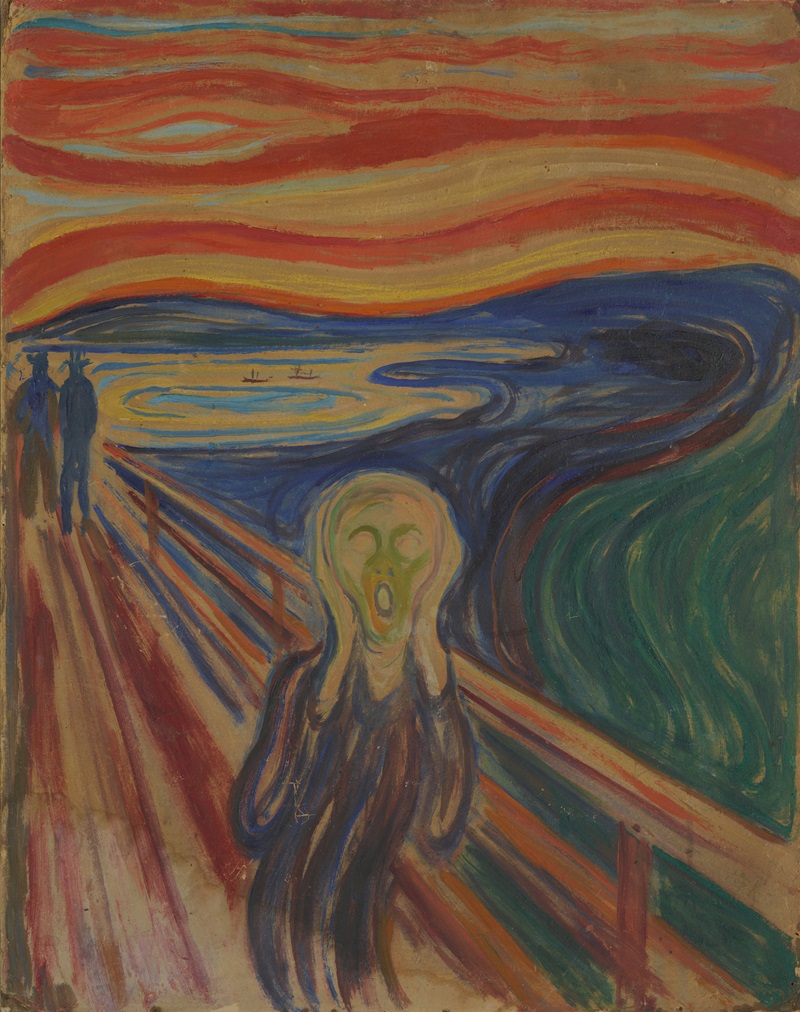Norwegian Embassy to Vietnam on October 5 introduced the opening of a brand-new building of the MUNCH museum at the center of Oslo, home to the world’s largest collection of works by Norwegian artist Edvard Munch, in Hanoi.
The embassy and the MUNCH Museum bring the Vietnamese audience closer to artworks by Norwegian-born expressionist painter Edvard Munch (1863-1944), one of the most prominent Symbolist painters of the 20th century.
| MUNCH Museum in Oslo, Norway. Photo: Ivar Kvaal |
This is one of the activities to boost friendship between Norway and Vietnam in the 50th anniversary of diplomatic ties (1971-2021).
Grete Lochen, Norwegian Ambassador to Vietnam, said: “I am very happy to bring this news to the Vietnamese audience in the context that we are celebrating the five decades of relation and cooperation between the two countries.”
With sharing by the museum’s director Stein Olav Henrichsen, museum managers and officials working in the culture and art sector in Vietnam are given experiences in running museums in the context of the once-in-century health crisis and the digital age.
Talking with representatives of dozens of museums nationwide and reporters at a digital press meeting on Oct 5, Henrichsen said he looks forward to opening the doors on October 22.
MUNCH museum and collection
| Edvard Munch (1863-1944) |
The 13-storey museum will offer visitors the full range of Edvard Munch’s work, boasting the world’s largest collection of Edvard Munch’s oeuvre.
MUNCH’s collection, the core of which Edvard Munch donated to the city of Oslo upon his death, includes over half of Munch’s known works, covering over 26,700 paintings, prints, photographs, drawings, and watercolors by the artist, ranging from 1873 to 1944.
Regarding the museum’s programs, Stein Olav Henrichsen said it will offer a wide array of inspiring performances to provide visitors with an insight into the painter’s artworks and his artistic career that covers painting, sculpture, and photograph.
From the perspective of a museum manager, he said the museum’s mission is broader than merely displaying artworks. It helps educate generations and solve individual and social issues and challenges facing the society, Henrichsen said in answering The Hanoi Times’ question on the museum’s contributions to promoting culture besides the value of art.
“I think when visitors come to the museum, they can see the problems they face and this is also a topic that we want to work together with other museums around the world to solve the society’s challenges,” he said.
Notably, MUNCH has special programs designed for children to help them interact and enrich their artistic sensibility. Each year, about 60,000 children come to the museum where they can engage in the creative process and training.
Ambassador Grete Lochen supported the idea, hailing the museum’s children-favored programs.
When being asked about key elements that an art museum needs to consider to be more compelling to the audience and to diversify its activities in the context of the digital age, Henrichsen told The Hanoi Times that it requires a diversity of activities.
Its range is not just regular exhibitions but many interactive activities for people to participate in, at the same time, the museum keeps the website and pages updated by offering virtual programs but real experiences to the audience.
Edvard Munch is well-known for The Scream painting that was set for the most expensive painting sold at auction by the Guinness World Record for an incredible US$119.92 million at Sotheby’s in New York in 2012.
The sale price beats the previous record for an artwork sold at auction of $106.5 million for Picasso’s Nude, Green Leaves, and Bust, sold by Christie’s in 2010.
| The Sun, 1909 by Edvard Munch. |
| The Scream, 1893 by Edvard Munch. |


.jpg)



